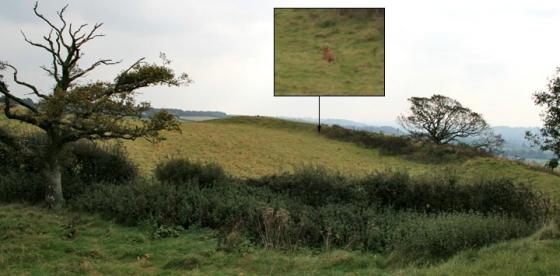These barrows were excavated by Edward Cunnington in the 1880s: he found some urns containing cremations, which are now in the Dorset County Museum.
They also star in Thomas Hardy’s ‘Return of the Native’ as a crucial meeting point for the characters. At one point the locals build a beacon fire on top of one:
...a pyramid of furze thirty feet in circumference now occupied the crown of the tumulus, which was known as Rainbarrow for many miles round... Perhaps as many as thirty bonfires could be counted within the whole bounds of the district; and as the hour may be told on a clock-face when the figures themselves are invisible, so did the men recognize the locality of each fire by its angle and direction, though nothing of the scenery could be viewed...
The first tall flame from Rainbarrow sprang into the sky, attracting all eyes that had been fixed on the distant conflagrations back to their own attempt in the same kind. The cheerful blaze streaked the inner surface of the human circle—now increased by other stragglers, male and female—with its own gold livery, and even overlaid the dark turf around with a lively luminousness, which softened off into obscurity where the barrow rounded downwards out of sight. It showed the barrow to be the segment of a globe, as perfect as on the day when it was thrown up, even the little ditch remaining from which the earth was dug. Not a plough had ever disturbed a grain of that stubborn soil. In the heath’s barrenness to the farmer lay its fertility to the historian. There had been no obliteration, because there had been no tending.
The name ‘Rainbarrows’ hints at more associations: is it that if you dig into them it will rain? (a frequent enough motif)






























































































































































